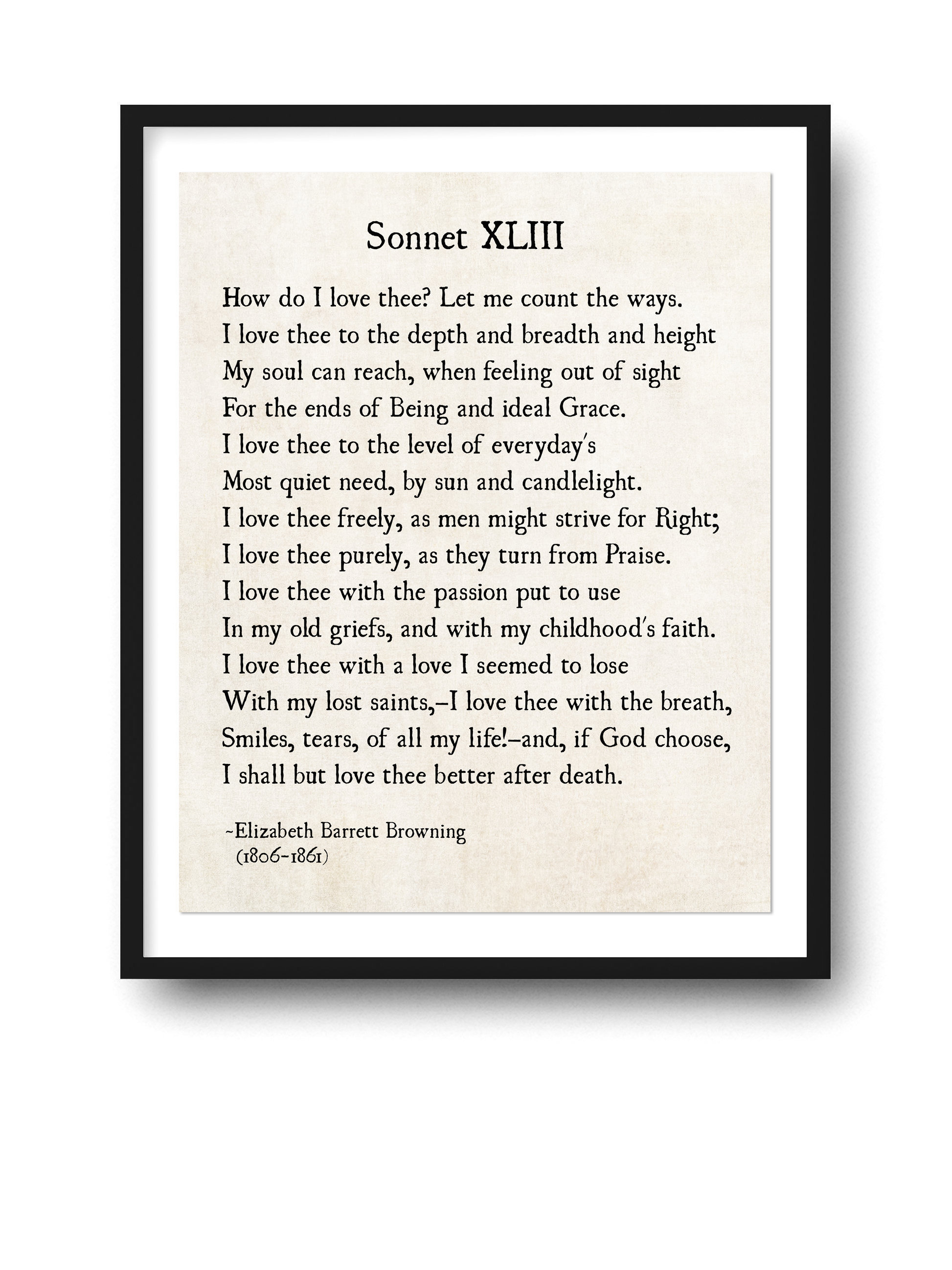
If you cannot believe there is no need for even trying. When she mentions her childhood’s faith she is implying the innocence of their relationship and how they can be naive sometimes. This is a very powerful key factor to the poem because she uses no gender markers such as him, her, she or he which makes it possible for the poem to be read out loud to any gender with any sexual preference.


She just keeps saying “Thee” which has a certain formality over it. Also, by repeating it she is enforcing it on the readers that she loves him and there is nothing else to do about it, nothing that will make her change her mind. This anaphora is to enforce the already existing knowledge about the strength of her love, and that what she feels is love, nothing more and nothing less. In the sonnet, Barrett Browning repeats “I love thee” over and over again rather than using different words for love. In the final lines she has achieved this by bringing up the subject of the afterlife ? “and, if God choose, I shall but love thee better after death”. This is a sonnet and all sonnets have 14 lines where the two last usually have a broader meaning than the rest of the sonnet. That there is nothing that she would change about him. In this way she is trying to illustrate she loves every single piece of him. In the second line she says “I love thee to the depth & breath & height” using normal measurements for something that cannot be measured. In the rest of the poem she is explaining how much she loves. But then she goes on saying that she will count the ways, which is a contradiction against her first line. Rather than using “why” she enforces this meaning. Sonnet 43 by Elizabeth Barrett Browning 1806-1861 The poet begins by saying “How do I love thee? Let me count the ways,” by which she starts off with a rhetorical question, because there is no ‘reason’ for love.


 0 kommentar(er)
0 kommentar(er)
